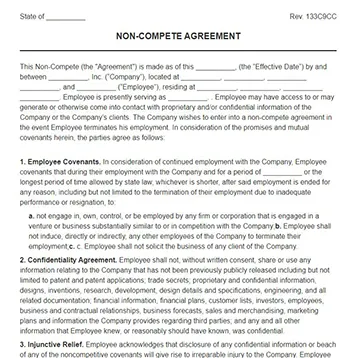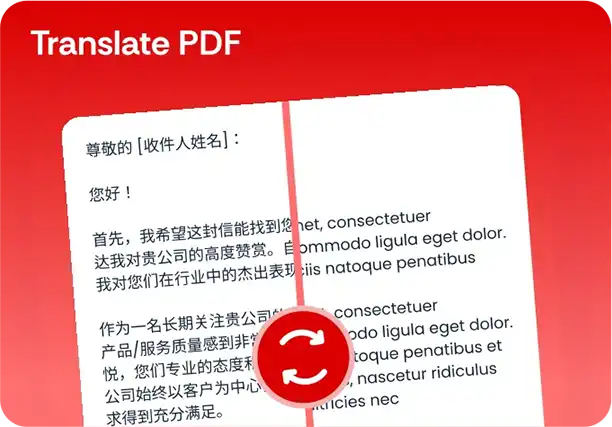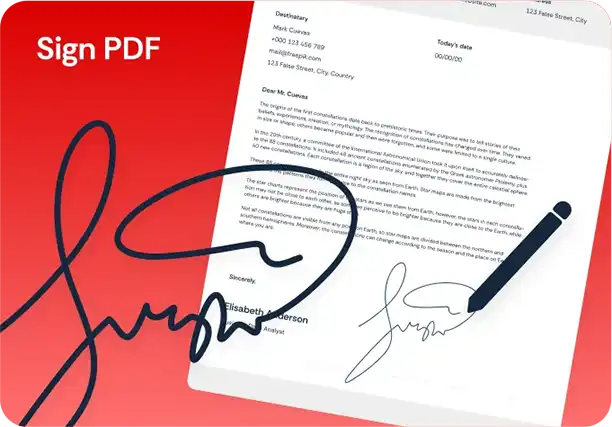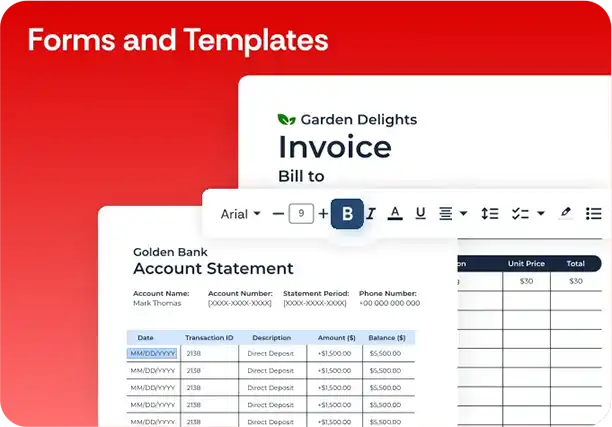Non-Compete Agreement Template
Stop searching and find out why people love the ease of creating beautiful and legally compliant Non-Compete Agreement with PDFSimpli.

Stop searching and find out why people love the ease of creating beautiful and legally compliant Non-Compete Agreement with PDFSimpli.


Pick from the colors and templates below
To Whom it May Concern:
I, ____________________, is the legal guardians of ____________,
born ________.
To Whom it May Concern:
I, ____________________, is the legal guardians of ____________.
To Whom it May Concern:
Guardian Information. We, _____ and _____, are legal guardians of _____.
Travel Consent. Child has permission to travel with _____.
Medical Authorization. We authorize necessary medical treatment.



A non-compete agreement is a document that prevents one party from working for or starting a competitor of the other party. In most cases, this type of agreement is used by an employer to prevent an employee from leaving and going to work for a direct competitor. The agreement may also explicitly prevent the employee from taking processes, client lists, strategies or other proprietary information to another organization.
Frequently, non-compete agreements are included as clauses in a larger agreement such as an employment contract. However, they can also be formatted as standalone agreements.
Typically, non-compete agreements have some limitations on their scope. For example, they may prevent working with direct competitors during a set timeframe after leaving the employer. These agreements are most commonly used with executives and others with access to high-value, proprietary information. However, they have become more common with other types of employees.
The goal of a non-compete agreement is to protect a business from the significant harm that could arise if a competitor were to access its trade secrets. This is most significant with research-oriented organizations or those developing disruptive technologies or practices. Although sharing intellectual property with an unauthorized party is illegal even without an agreement, having one can offer an added level of protection.
When someone joins your business and has access to sensitive information, it is important to prevent him or her from bringing that information to a competitor. If that should happen, it may cause irreparable damage to your company. Therefore, signing a non-compete agreement can be necessary to protect your business. Similarly, it can prevent an employee from leaving your business and immediately starting a competitive one. Using non-compete agreements is very common with professional services businesses such as law firms. If an employee left and took clients with him or her to a new practice, that would cause substantial harm to the employer.
The main reason to use a non-compete agreement is to lay out expectations of what is acceptable competition after leaving your organization. A lot of employees may not think twice about moving to a direct competitor and bringing everything they have learned with them. Simply having an agreement in place can help to encourage them to be more thoughtful about their next job moves.
It also helps establish your case if you need to pursue legal recourse after a former employee uses his or her prior position to benefit his or her new employer. Having non-compete agreements helps to establish your case that the trade secret was truly proprietary and valuable knowledge.
When writing a non-compete agreement, it is important to think about enforceability. The following tips will help you write a better agreement:
Avoid unlimited time periods or overly broad definitions of competition. If the agreement is unreasonable, it will likely be thrown out in court. Legally, the agreement but be fair according to a hypothetical “reasonable person.”
People are going to learn things working for you and use that knowledge in future jobs. It helps to be specific about which information, processes and IP you want to protect.
A non-compete agreement for a receptionist is likely to be unenforceable. Focus on employees that have access to your trade secrets.
If the non-compete agreement is part of a larger agreement, make sure there is a severability clause. In other words, if the non-compete is found to be unenforceable, the rest of the agreement still stands.
Determine the regions that your business is likely to compete in and specify them in the agreement. An excessive geographic scope may make your agreement unenforceable.
The only people who can sign non-compete agreements are employees and sometimes contractors. If you have a volunteer or other unpaid party, the agreement will not be enforceable.
In addition to enforceable terms, your non-compete agreement must include information such as the nature of the relationship between the two parties. It should also include the date of the agreement and when it will come into force (typically following termination of the employment agreement).
Before you begin creating the non-compete agreement, take some time to prepare your thoughts and plans. For example, consider what the scope of the agreement will be. Make a list of the trade secrets and valuable property that you are trying to protect. Similarly, think about the specific competitors you are trying to defend against.
Although you can write a non-compete agreement yourself, it is easiest to start from a template. There are a few software tools you can choose. PDFSimpli is one of the best options. It has a selection of PDF forms for non-compete agreements including some with confidentiality clauses. Select the best form for your needs then open it in the online editor.
With the form open in the online PDFSimpli editor, fill out the relevant information. This will include the names of the parties, the scope of the agreement and the term. PDFSimplie makes it easy to edit the agreement however you see fit. You can also add your signature by drawing it, typing it or adding an image.
Before sending the agreement to be signed by the other party, take a moment to review it. Remember that it must have a reasonable scope to be enforceable by law. If the agreement seems unfair or overly burdensome, consider editing it further. Also, take a moment to ensure that all party names are spelled correctly and that the dates are accurate.
Finally, you can complete the document and have the other party sign it. You have a few options with PDFSimpli. You can save the document and come back to it later, download it in a variety of file formats, print the document or send it straight to the other party for a signature. It couldn’t be easier!
Non-compete agreements should be used by employers that are concerned about the harm from a trade secret being leaked to a competitor. They are also helpful for businesses that are concerned about other employees or clients being solicited by a former employee. This is especially relevant for service businesses such as insurance agencies.
You may also want to use a non-compete agreement if you are buying a business. This will prevent the seller from starting a competitive business.
The term (timeframe) of a non-compete agreement is set within the agreement itself. Most agreements extend for six to 24 months. If there is no term specified in the agreement, it is likely unenforceable. Similarly, if the agreement is overly long, it would likely be considered overly burdensome and could be challenged in court. If you are unsure what is appropriate, consider consulting an attorney.
The non-compete agreement should include the nature of the relationship between the two parties, the term of the agreement and its scope. You can include a geographic region, competitor definition and/or industry as part of the scope. Additionally, you can specify classes of processes, ideas, data and other properties that are covered by the agreement.